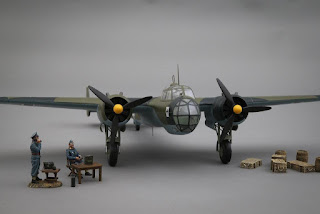Brickmania: German Panzer III Review
Brickmania was started all the way back in 1999 by designer Daniel Siskind. In 2000, when he released his first design (one of the first to do so), he came into contact with a small but well connected adult LEGO community. The kit was a medieval blacksmith shop and was an instant success. He followed it up with a whole line of medieval village kits. As word got out and his fans grew he started getting inundated with requests for military and train themed kits. Then with more than a dozen successful kits released including one that was taken on by LEGO officially in 2002 Dan announced he was leaving the custom LEGO scene to follow other interests. As a goodbye present he released a magazine with all the instructions for his released kits. That seemed to be it....
Until in 2008 when a publisher contacted Dan to see if he wanted to author a book about military modelling and LEGO. That is when he found out his previous kits had gained a massive following, alongside a booming market for military custom LEGO! So, by 2009 Brickmania was again alive and well. A year and a thousand kits later Brickmania was booming and has continued at a meteoric pace ever since. They have even opened two shops, one just recently opened. I wonder if we will see Brickmania shops across the globe at some point. I'd love to see them open over here in the UK!
First I shall come clean. I was offered the new Apache Longbow for review. However, I so wanted a WWII tank as the first kit to review that I asked for the Panzer III instead, to which they agreed. To those who would have preferred me to have reviewed the Apache, I apologise whole heartedly. It does look an awesome kit, and pretty darn big one aswell! If I get the chance to review more Brickmania kits I will not interfere and take what is offered.
The Panzer III medium tank started the War as Germany's main medium tank. This tank was supposed to take on all tanks from all nations. It was the tank Germany relied on in an anti tank role supporting the short barrel Panzer IV designed for an anti infantry role. During the War against Poland and then France it held its own, though training, plus all tanks having radio comms, helped them along the way. However, not far into the invasion of Russia, it came up against the formidable KV-1 heavy tank and the T34 (many say the best tank of the war). The Germans soon realised the Panzer III gun couldn't match either of those tanks and it took superior tactics and skill to be able to manoeuvre and then take these Russian tanks from the side or rear. Soon the Panzer IV was given a long barrel gun and became the main medium tank but the Panzer III carried on, constantly being upgraded, with each new version given a letter at the end. The last Panzer III version [the Panzer III N] was made in 1942 and was given a short barrel and moved into an anti infantry role, though Panzer III's continued to fight across the battlefields of Europe right until the end of the War. Around five thousand seven hundred were built from '39-'43.
The finished model stands proudly on the shelf where I put all my favourite miniatures. It has a rotatable turret and you can elevate the gun. The Panzer III comes with a German Panzer commander all kitted out in the black Panzer uniform and proudly sporting an Iron Cross. The print work on the MiniFig is excellent. The commander stands in the commanders hatch. As he stares across the endless, flat Russian Steppe, an overwhelming feeling of melancholy falls upon him. It's difficult for him to see where the steppe ends and the sky begins. "There is no end to this forsaken country" he mutters to himself. Pointing forwards he yells "Move out". "When will this end...." he mumbles..
I believe Brickmania are using new tracks, I can't comment on what came before but the ones here look superb, time consuming to link together, but well worth it! The Tank uses all grey bricks on the whole which is perfect for the German Panzers especially in the first half of the War, when they were all grey before they started using that yellow colour. I believe the Allied tanks do suffer in the colour respect though as LEGO haven't made any green LEGO pieces that could be used to build them. So those too are grey in colour. Nevertheless, the WWII desert kits do come in yellow (see Panzer II kit below), LEGO as we know have made lots of yellow bricks, which is perfect for Brickmania!
Retail Price of Panzer MkIII $170
Just heard it will be re released sometime this year!






























Follow Us